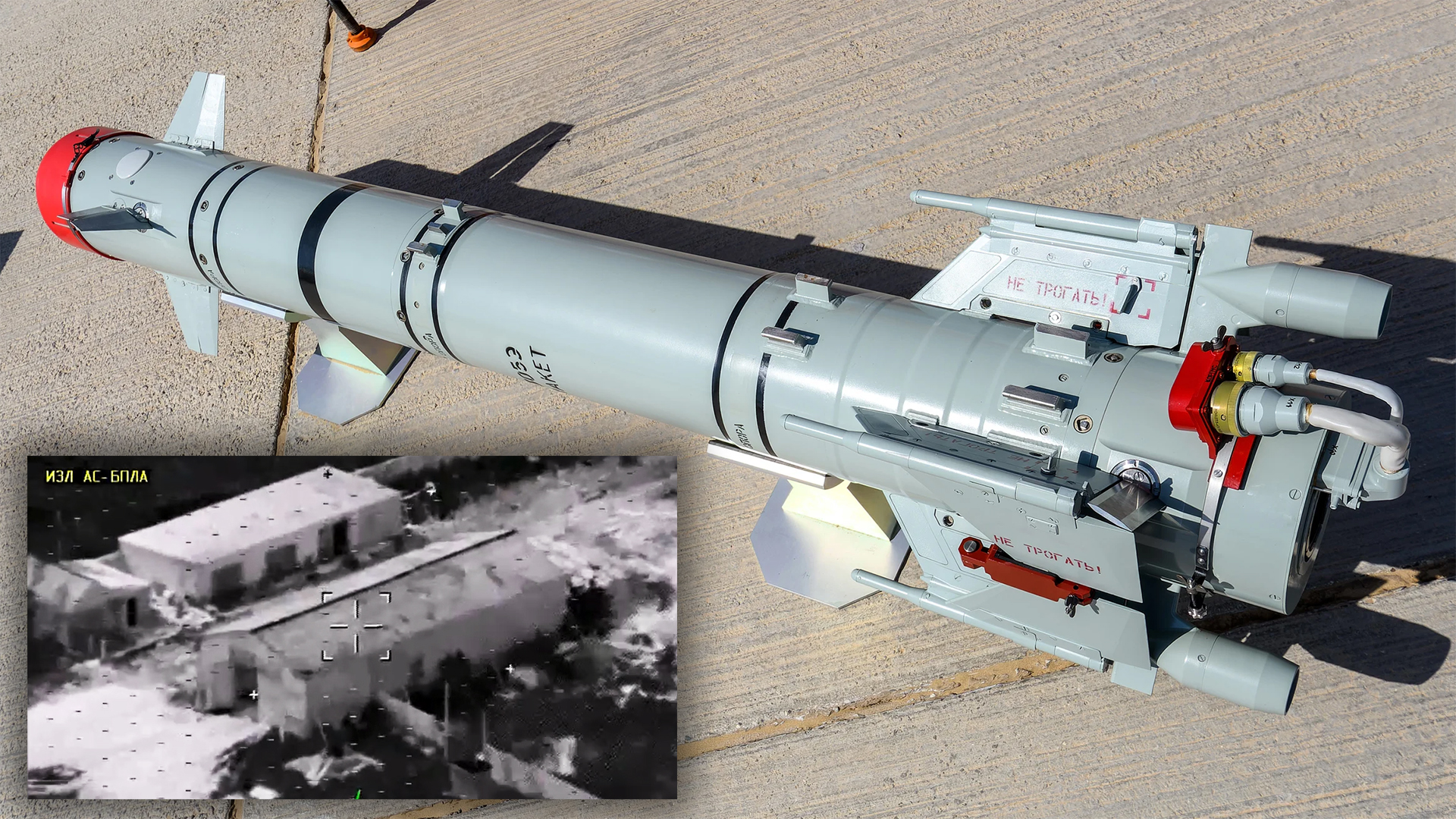In early June, Russia published a video from the thermal-imaging seeker of a missile as it struck a low-rise farm building, reportedly in Ukraine. Other similar footage has since followed. A few days after the appearance of the first video, Russian news agencies, citing “well-informed sources,” stated that it showed the new LMUR anti-armor missile in action. The truth, however, may well be more complicated.
After all, the term ‘Russian news agencies,’ in this case, doesn’t mean much. They appear to have simply rewritten what users of different social networks had previously guessed and it’s likely that those “well-informed sources” never existed.
What’s interesting, though, is that the videos clearly indicate a thermal-imaging seeker. Previous videos of different Russian missiles striking various targets in Ukraine were always filmed remotely: by a drone watching over the battlefield, by a combat helicopter’s targeting turret, or by a CCTV camera mounted somewhere in the local area.
Russia does have several types of weapons fitted with an optoelectronic seeker that transmits imagery to a command post or aircraft crew. These range from small weapons, weighing only a few pounds, like the KUB and Lancet loitering munitions, up to large weapons, including various versions of the Kh-59M air-launched missile, each of which weighs close to 2,000 pounds.
But judging from the dynamics of the missile’s movement in these videos, as well as from the type and size of the targets (always a one or two-story building), the videos show something of intermediate size. The most likely candidate is the LMUR, or izdeliye 305 (item 305), missile that weighs a little over 200 pounds. In most videos, the overlaid text is blurred. However, in some cases, the inscription AS-BPLA can be seen, which also points to the LMUR. AS-BPLA is the designation of the communication equipment used in conjunction with the LMUR missile.
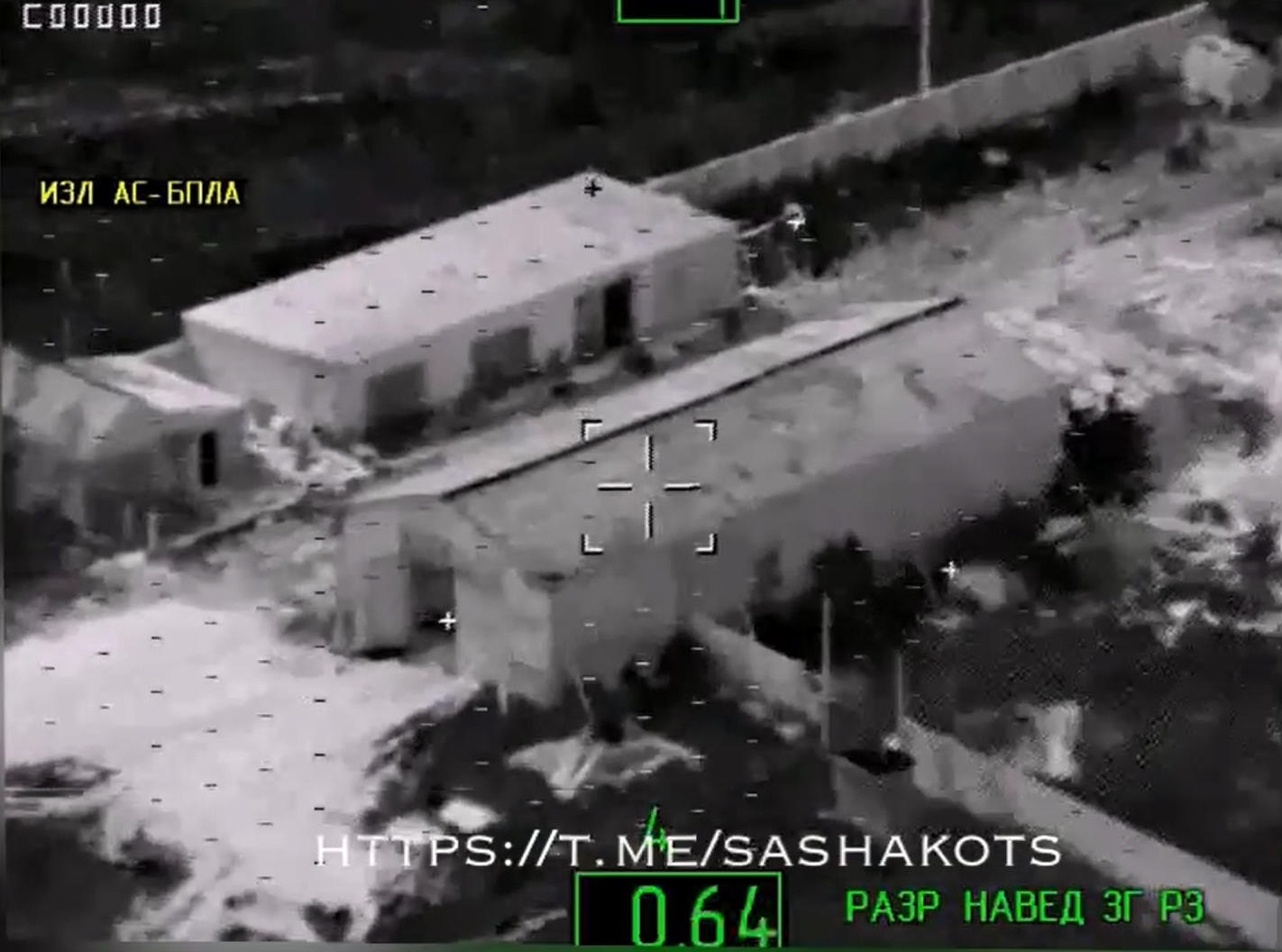

Confusing past
The history of the LMUR project is puzzling. The acronym first appeared around 2007, as a lightweight missile project from the Tactical Missiles Corporation (in Russian, Korporatsiya Takticheskoye Raketnoye Vooruzheniye, or KTRV). However, shortly after, around 2009, this program was abandoned for reasons that are unclear.
On February 22, 2011, the Russian Ministry of Defense placed an order for research and development (R&D) work codenamed Prifiks and involving the creation of a lightweight multirole guided missile, the izdeliye 79. This time, the order was not awarded to KTRV, but to another company, the Machine Building Design Bureau (Konstruktorskoye Byuro Mashinostroyeniya, or KBM). Located in Kolomna near Moscow, this specializes in anti-tank guided missiles (ATGMs), for example, the Ataka and Khrizantema (as well as Iskander ballistic missiles, but that’s a completely different story).
According to the contract, LMUR izdeliye 79 was to be made, tested, and then readied for series production by November 25, 2014. In 2013, a batch of test missiles was produced, but KBM was unable to begin test launches because… there was no launcher. The ministry of defense had simply not ordered one. Therefore, on November 11, 2014, KBM formally told the ministry of defense that it had ceased the Prifiks R&D work. On March 22, 2017, the ministry officially terminated the contract. There followed a series of lawsuits for compensation, but that is beyond the scope of this article.
The LMUR project was saved by another contract, about which little is known. Probably in 2012, KBM received an order from the Federal Security Service, the FSB, the successor agency to the Soviet-era KGB. This called for a missile known as izdeliye 305. In particular, the FSB wanted long-range armament for its specially equipped Mi-8MNP-2 Hip helicopters used for unconventional warfare in the Caucasus. The ‘305’ missile is actually the same as the earlier ‘79,’ but adds a two-way datalink, which transmits video from the missile seeker to the helicopter’s cockpit and transmits commands from the operator to the missile while it’s in flight. This is commonly referred to as man-in-the-loop guidance. The FSB wanted to be able to have control over the engagement throughout the missile’s flight, with the possibility of ‘recalling’ the missile if the target turned out to be different than expected.
Along with the izdeliye 305, in 2013, the APU-305 (Aviatsionnoye Puskovoye Ustroystvo) rail launcher was ordered from the Toropov Vympel company in Moscow. This was the interface to suspend the LMUR missile under a helicopter. The APU-305 was intended for a single missile; later, Vympel made a two-round APU-L launcher.
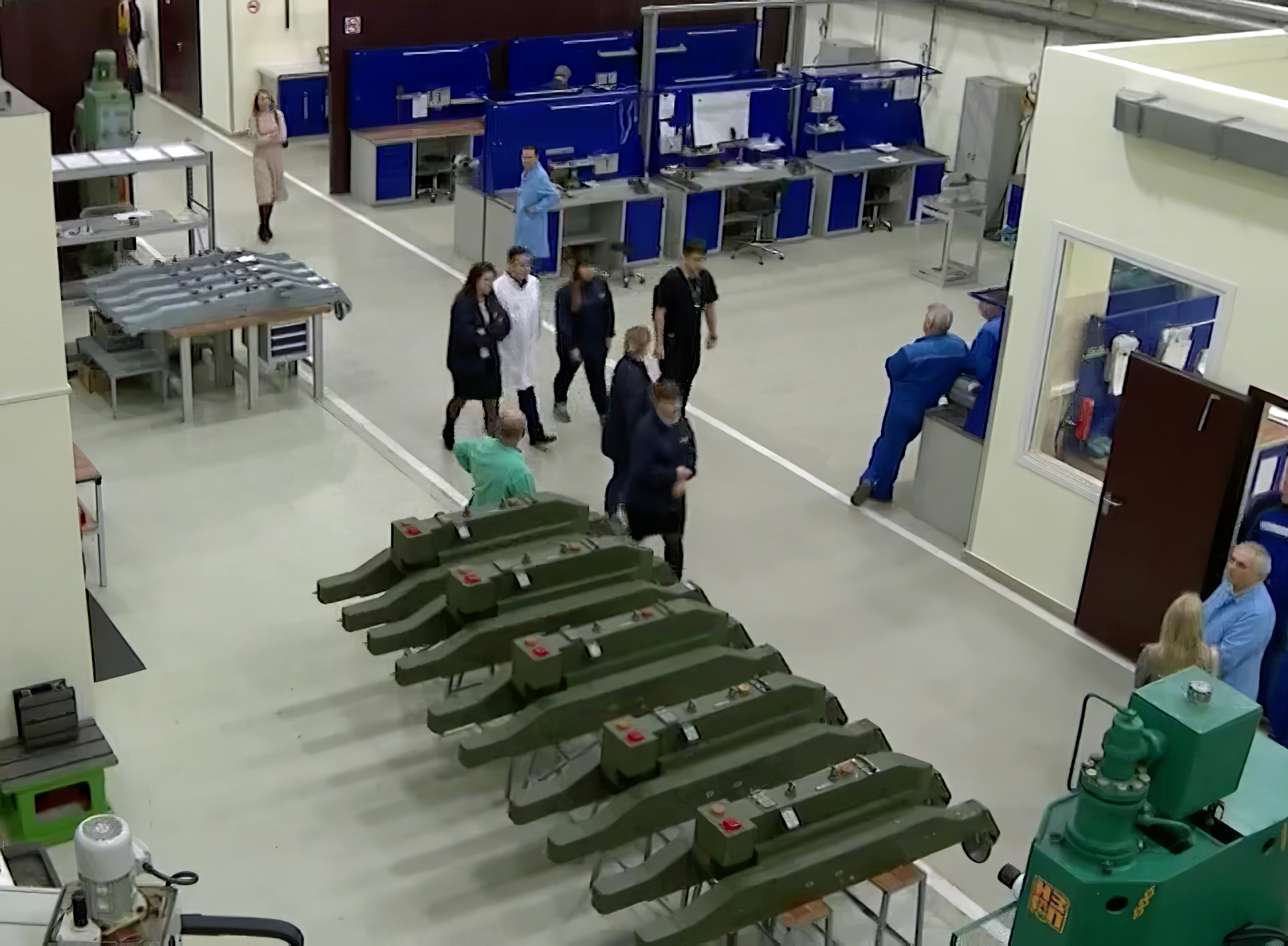
Tests of the LMUR missile aboard the Mi-8MNP-2 helicopter took place in 2015 and 2016. Serial production of the weapon started soon after, and the missile was deployed on helicopters operated by the FSB. The Russian Ministry of Defense then became interested in the missile again and placed its own order. In 2019, LMUR tests began on the modernized Mi-28NM Havoc attack helicopter, followed a year later on the Ka-52M, the latest version of the Ka-52 Hokum. Typically, helicopters are armed with four missiles on APU-305 launchers or a maximum of eight missiles on APU-L rails.

Operational envelope
LMUR stands for Lyogkaya Mnogotselevaya Upravlayemaya Raketa, or light multipurpose guided missile. It’s also known as izdeliye 305 or 305E in its export version. Despite the word ‘light’ in its designation, it’s twice as heavy as more traditional Russian helicopter-launched ATGMs, such as the 9M120 Ataka (AT-9 Spiral) or 9M123 Khrizantema (AT-15 Springer). The range of the LMUR missile is up to 9 miles, or twice as far as previous Russian anti-tank missiles.
The missile has a canard aerodynamic configuration with four cruciform split fins at the front. Next is the warhead compartment and then the solid-fuel rocket engine. The large cruciform wings are folded for transport and unfolded when the missile is suspended under the helicopter.
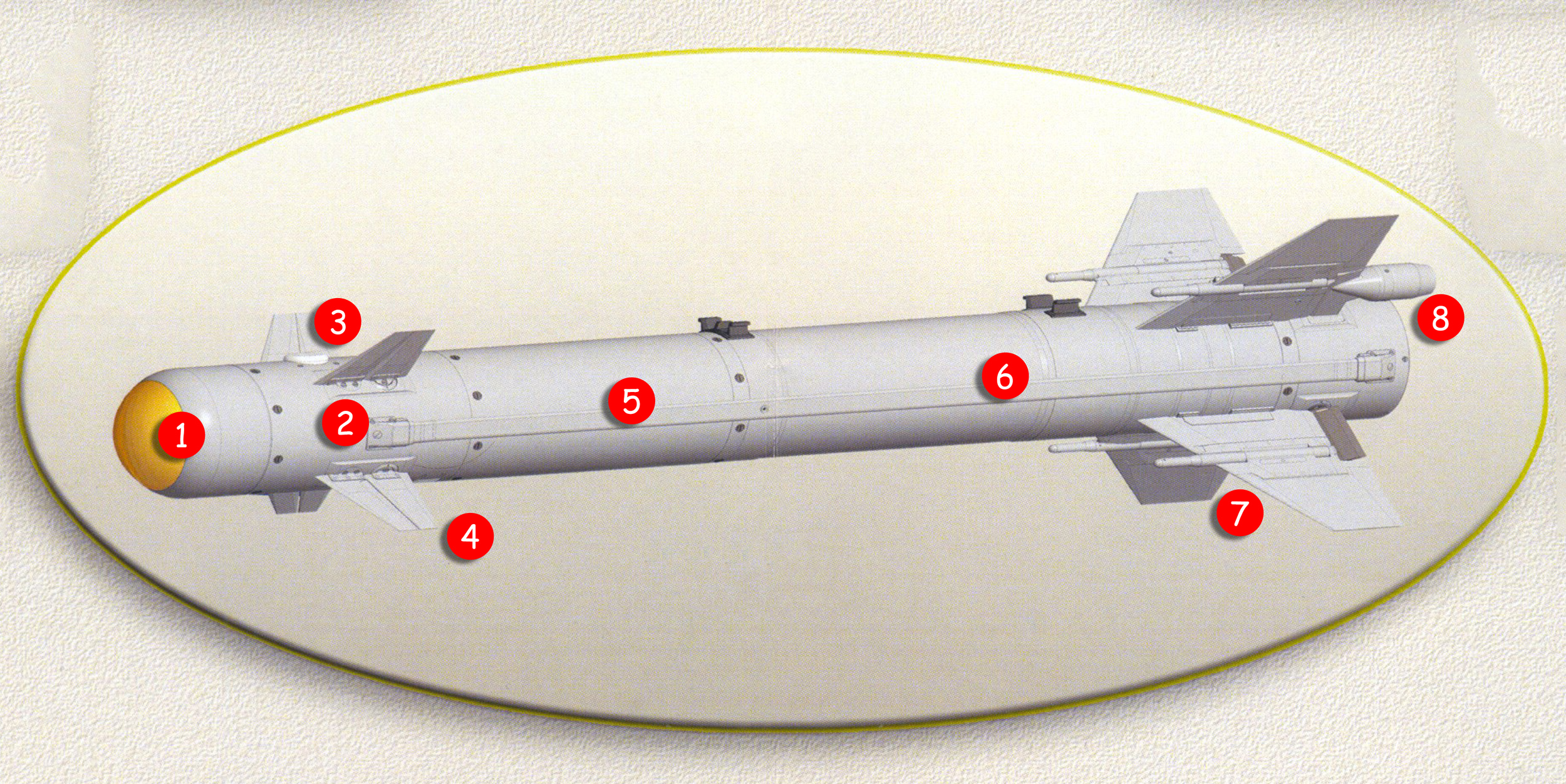
The training variant of the missile, or izdeliye 305-UL (Uchebno-Lyotnaya, flying training), differs from the combat version in having a smaller, non-folding wing; there is also no warhead.
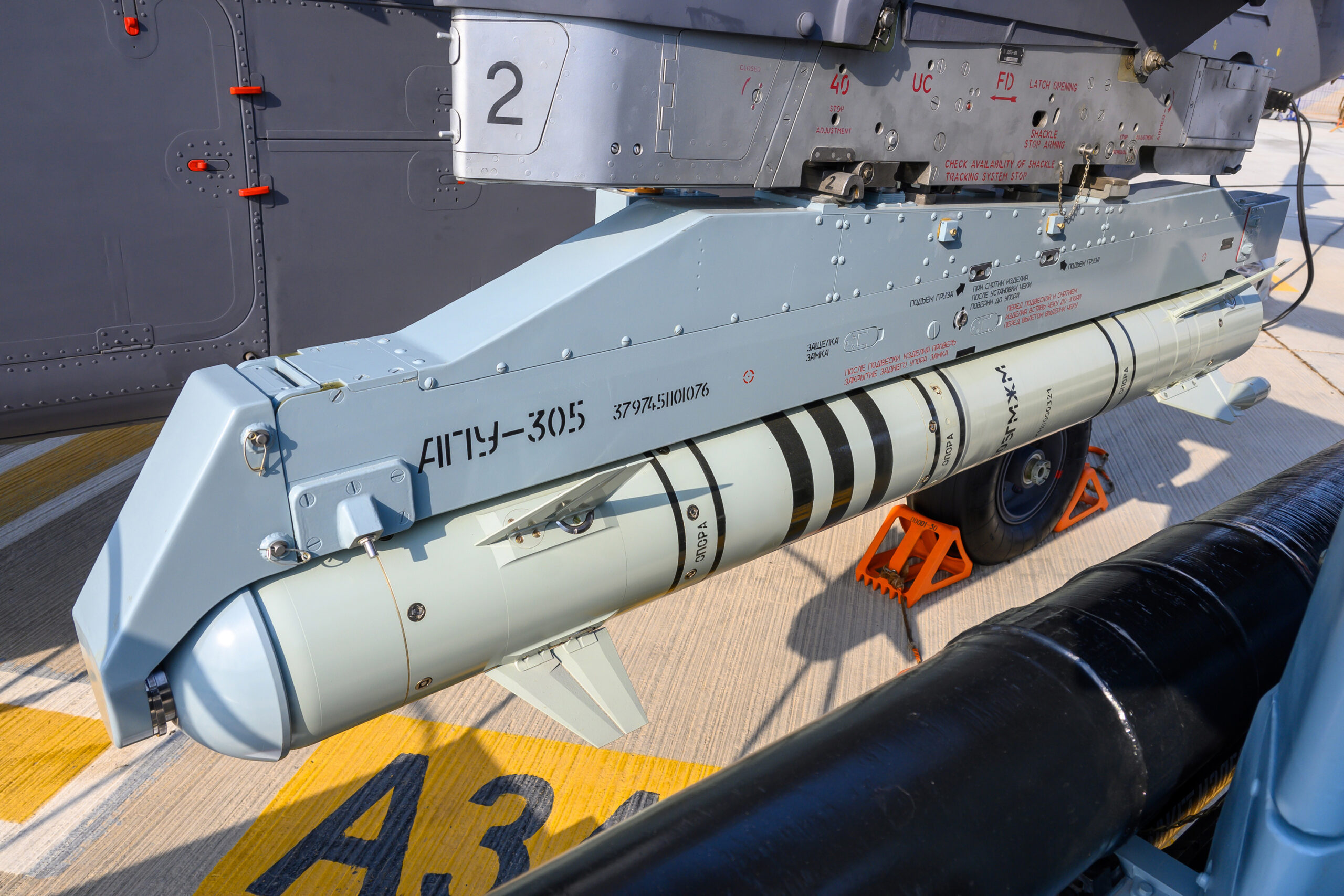
At the front of the missile is a 9B-7755 thermal imaging seeker, developed by the MNITI institute in Moscow. The navigation system consists of an inertial autopilot, a radio altimeter, and a BNAP-305 satellite navigation receiver with an antenna at the top. The BNAP-305 works with both Russian Glonass and Western GPS navigation systems. Two of the four wings are fitted with rear-looking datalink antennas.
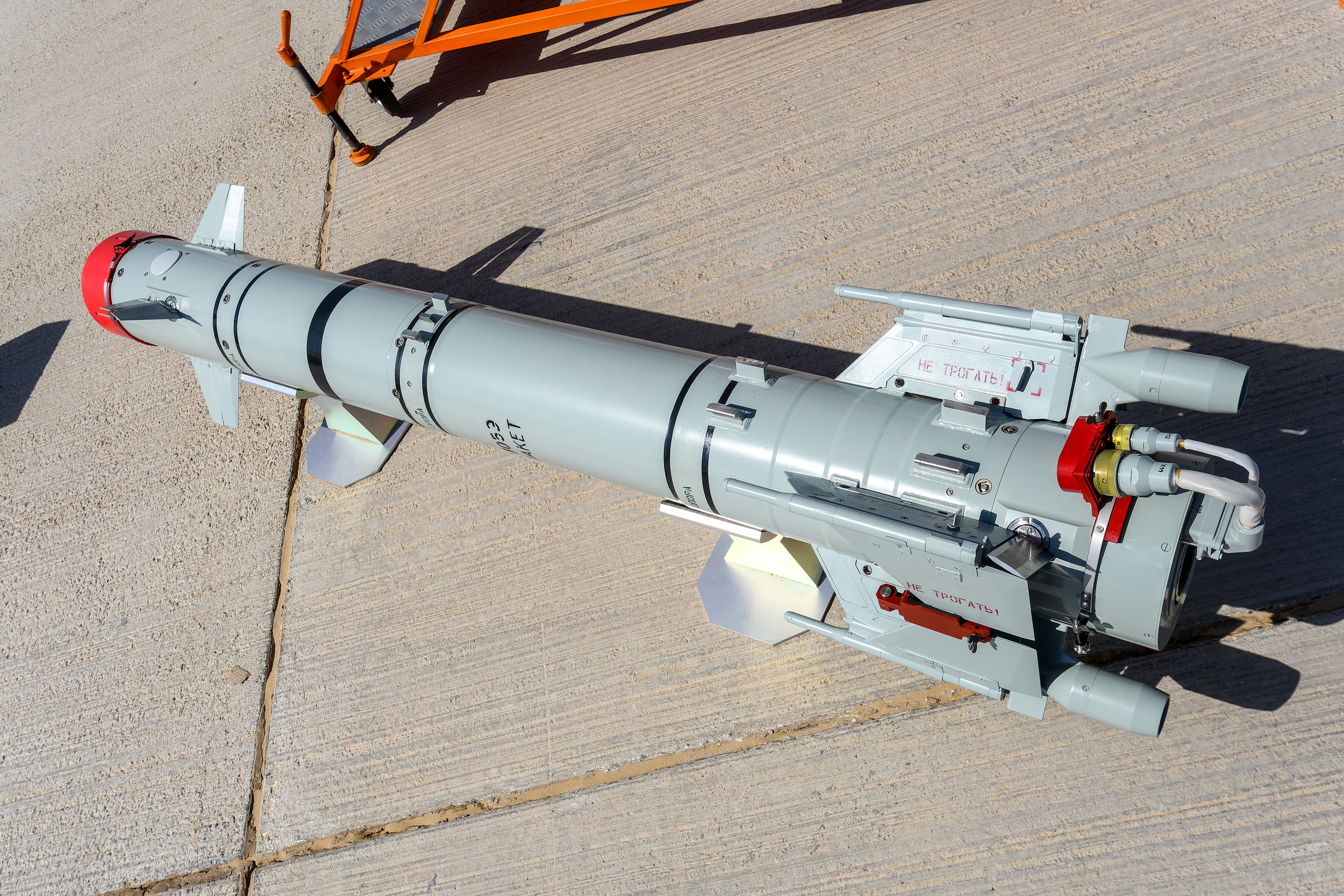
We know very little about what foreign components are used in the LMUR missile. The author has so far only found information pointing to a Tesla Electric power supply and some chips from the German Telefilter company, but there are undoubtedly others. The ability of Russian arms manufacturers to source products like these has increasingly come into question as a result of tighter sanctions following the invasion of Ukraine.
In the simplest method of use, the LMUR missile is fired against a target that’s within visual distance. The operator in the helicopter cockpit sees the image from the seeker while the missile is still hanging under the wing. They mark the target which is then remembered by the seeker. After the missile is launched, the helicopter can turn away, while the missile seeker automatically tracks the target until it hits.
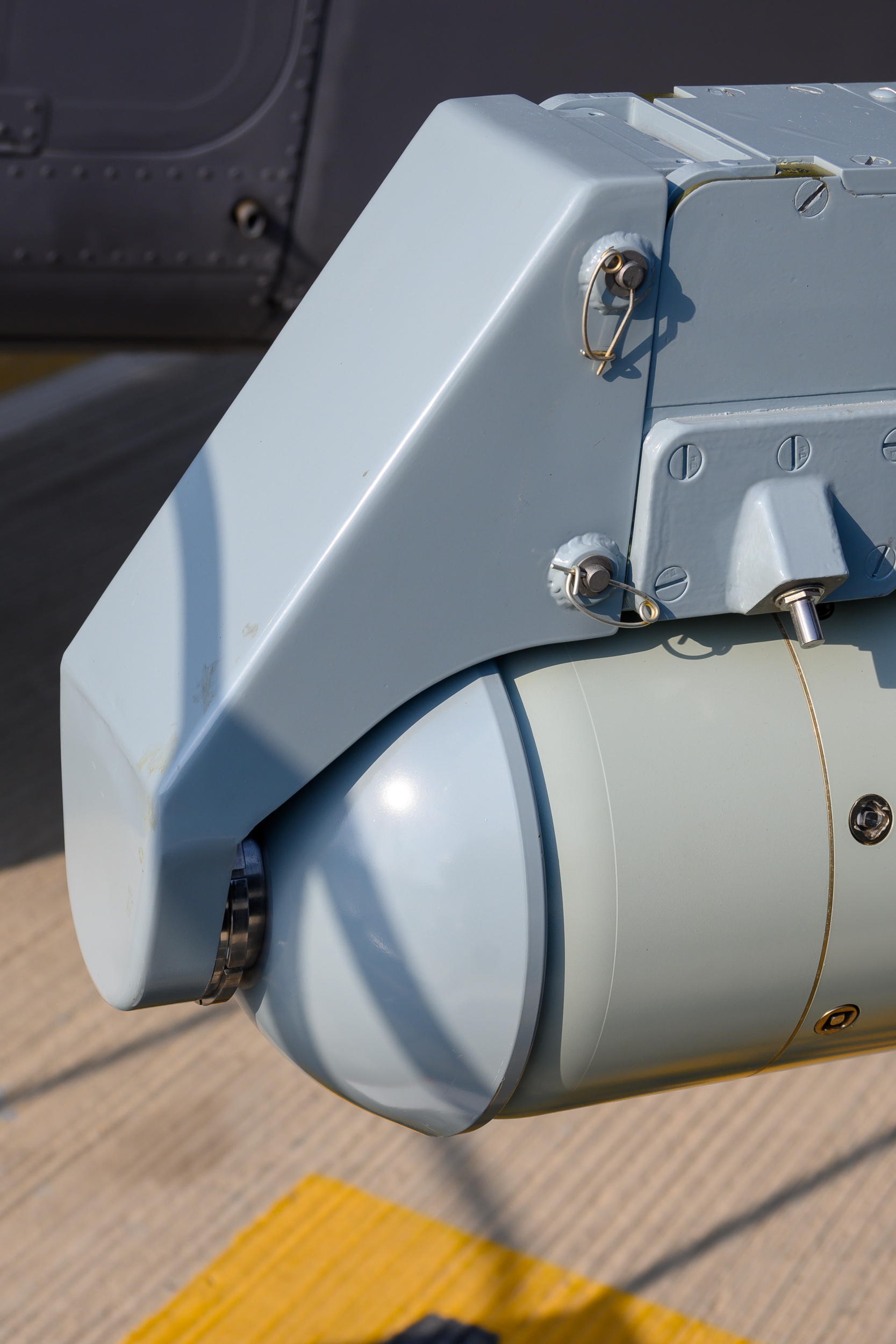
In another method, the first of its kind implemented in a Russian ATGM, the missile can be fired at an invisible, beyond visual range, or obscured target. First, the missile flies to the target area guided by the inertial autopilot with corrections provided by satellite navigation. The image from the seeker is transmitted to the helicopter cockpit via datalink, and guidance commands are transmitted back to the missile. The operator on board the helicopter observes the image, selects a target, and indicates it to the missile. The operator may change the target or cancel the shot. In one of the published videos that claim to show the LMUR, we can see how the target indication switches to another building a few seconds before it hits.
In order to communicate with the missile, the helicopter needs the appropriate equipment. This system is the AS-BPLA (Apparatura Svyazi s Bespilotnym Letatelnym Apparatom, or communication equipment with an unmanned aerial vehicle). It was created by the KB Luch design facility in Rybinsk and exists in different variants. The two-way datalink operates in the S-band (2-4GHz frequency range; 7.5-15cm wavelength), has a declared bandwidth of 5.4 Mbps, and a range of 31 miles (50km).
On the Ka-52M helicopter, the communication pod has an unusual droplet shape and is suspended under the left stub wing. On the Mi-8MNP-2 helicopter, the radio datalink antenna is located in a bulbous fairing in the helicopter’s nose. The same is true of the Mi-28NE helicopter, which was unveiled at the Dubai Airshow in November 2021, when the LMUR was presented abroad for the first time. Similar equipment had not been seen on the more recent Mi-28NM helicopter, but it probably involves a pod similar to that on the Ka-52M.
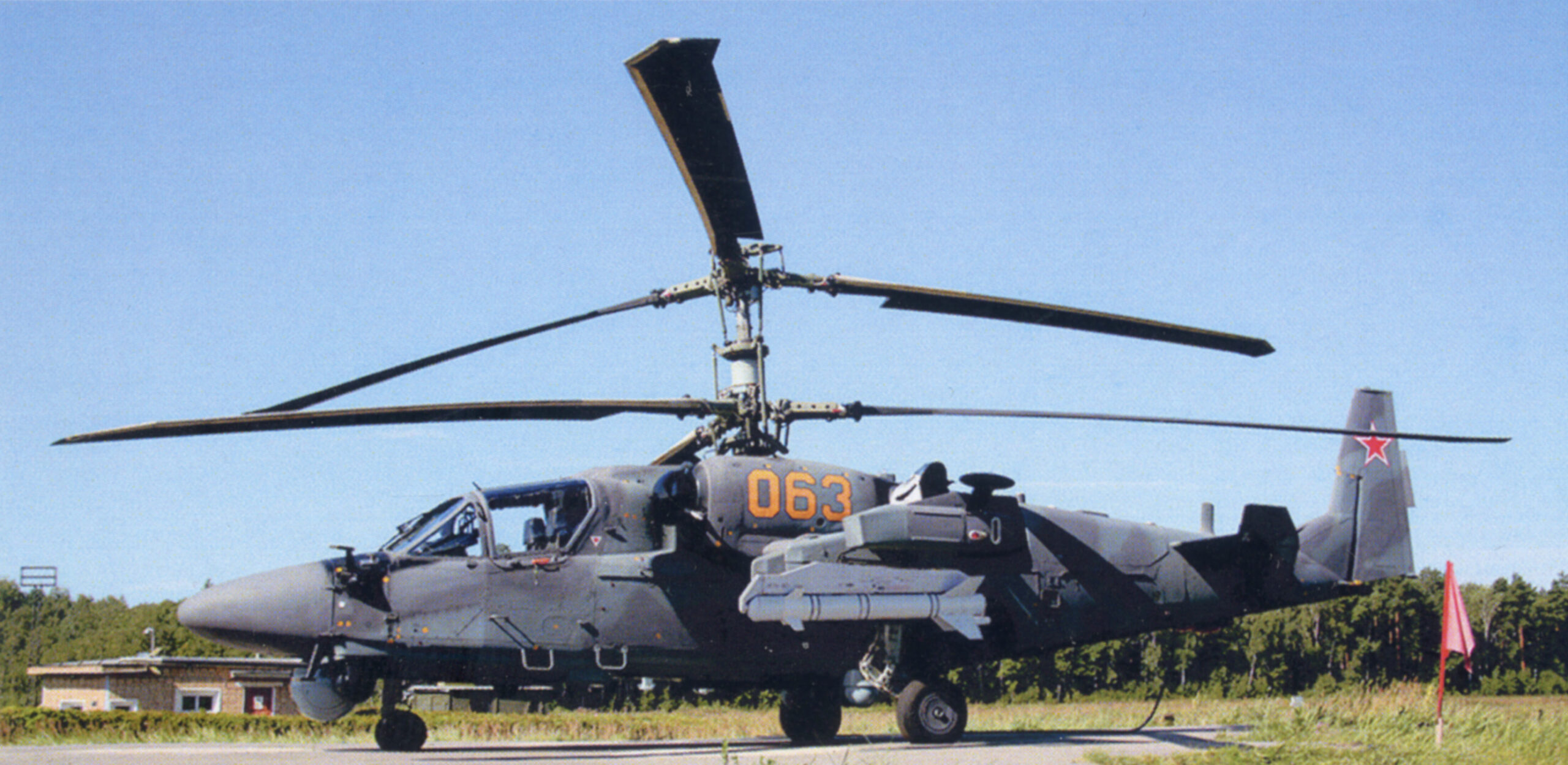

In documents about the special-purpose Mi-8MNP-2 helicopter, alongside izdeliye 305, one more designation is mentioned: izdeliye 306. Although unconfirmed, this may well be a variant of the LMUR missile with a different type of warhead. The basic izdeliye 305 version has a high-explosive demolition warhead, while the less common izdeliye 306 version would probably have a cumulative warhead.
Uncertainties
On the one hand, the use of the LMUR in Ukraine would not be surprising. This missile has been in production for several years and the author’s calculations would suggest that at least 200 missiles have already been delivered to the Russian Ministry of Defense, plus an unknown number to the FSB.
It is far from being a cheap weapon. According to a 2018 contract, at the then prices, one LMUR missile cost 14.2 million roubles, or $227,000; the current price has likely not changed much. This is a price for the Russian Ministry of Defense, while an export price would almost certainly be much higher.
However, a few facts remain puzzling. All videos claiming to show the LMUR in Ukraine were made by the missile seeker’s camera. We haven’t seen the missile itself once, neither suspended under a helicopter nor in the form of debris. There is also no indication of any helicopter being equipped with the missile-control datalink pod.
Some of the targets these missiles purportedly hit in the published videos are also strange. They comprise various outbuildings or barracks, some of them seemingly abandoned. In one case, the building doesn’t even have a roof, as if it were on some kind of range.

If LMUR missiles are being used in Ukraine, the most probable launch platform is the Mi-8MNP-2 special forces helicopter operated by the FSB; this could also explain the accompanying mystery. The Mi-28NM and Ka-52M helicopters, also capable of firing the LMUR, are not yet available in operational air force units. In Ukraine, they would be piloted by test crews of the 929th Flight Test Center’s helicopter division in Chkalovsky or the 344th Army Aviation Crew Conversion Center in Torzhok or, less likely, by Mil and Kamov test pilots.

There is one other option. About five years ago, within R&D work codenamed Baikal, it was planned to adapt the LMUR for use from a ground launcher mounted on an armored vehicle. It is not known what happened, but it’s possible some of these vehicles have been deployed in Ukraine on a trial basis, although the available videos clearly suggest air-launched missiles.
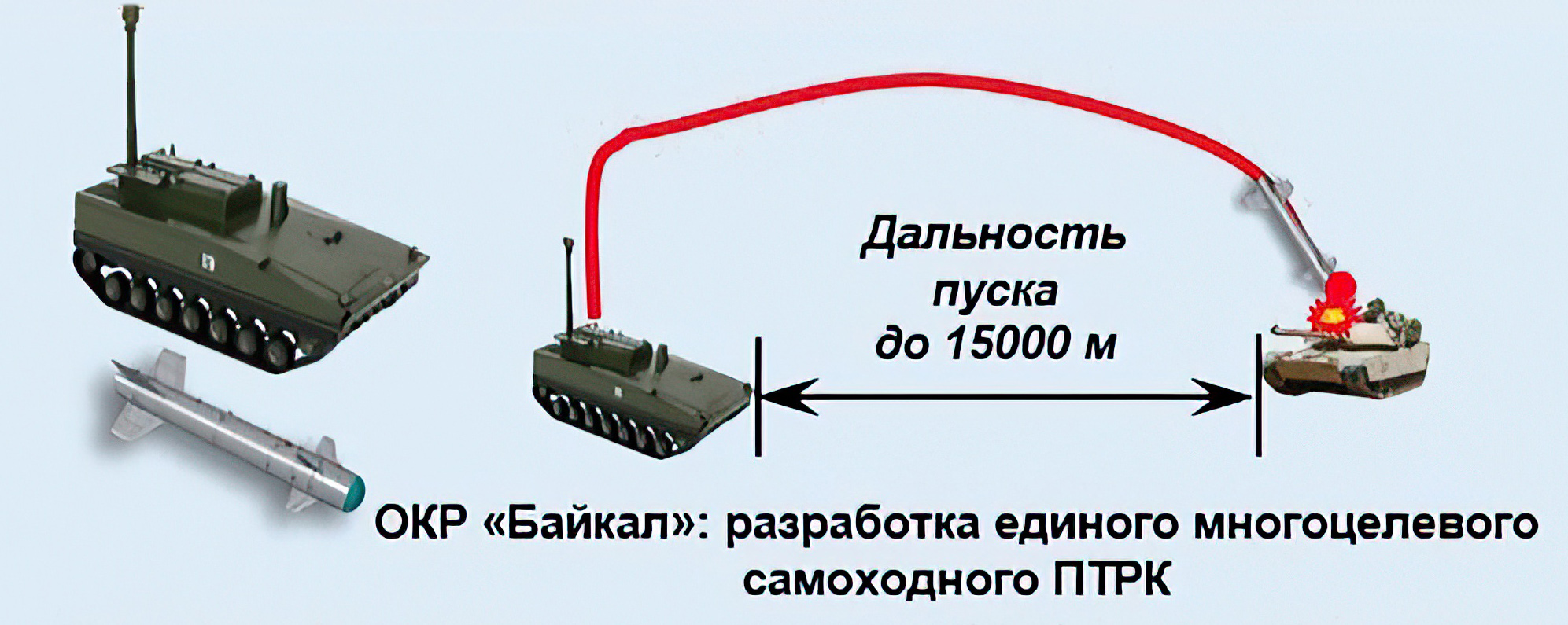
Clearly, there are many ambiguities surrounding the LMUR missile. Nevertheless, the program is clearly an important one for the Russian military, which otherwise possesses only previous-generation helicopter-launched ATGMs that lag well behind their latest Western counterparts. With that in mind, we are likely to see more of the LMUR in the future, whether in Ukraine or elsewhere.
LMUR (izdeliye 305E) missile specifications
| Maximum range | 14.5 kilometers (9 miles) |
| Maximum speed | 447 knots (230 m/s) |
| Flight altitude | 100-600 meters (328-1,969 feet) |
| Weight | 105 kilograms (231 pounds) |
| Warhead weight | 25 kilograms (55 pounds) |
| Length | 1,945 millimeters (76.6 inches) |
| Body diameter | 200 millimeters (7.9 inches) |
Piotr Butowski is a leading expert on Russian aviation. Since the late 1970s, he’s written 30 books and published thousands of articles in aviation magazines all over the world.
Contact the editor: thomas@thedrive.com
